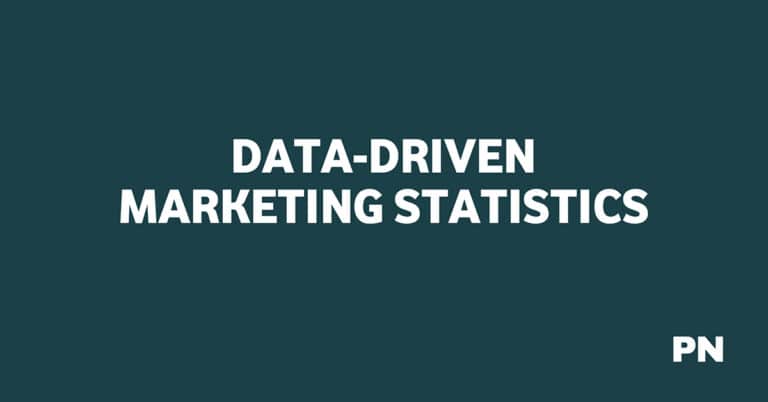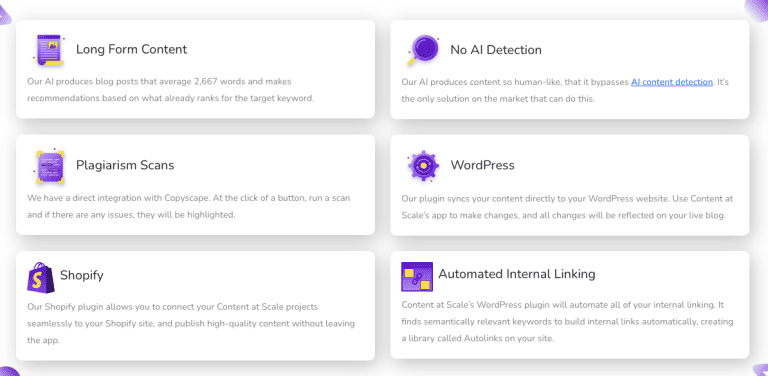What is Content Marketing? The Absolute Beginner’s Guide

If you’re new to the world of digital marketing, you may have heard the term “content marketing” being thrown around.
But what exactly is content marketing? Content marketing is a strategy that involves creating and sharing valuable, relevant, and consistent content to attract and retain a clearly defined audience – and, ultimately, to drive profitable customer action.
Content marketing can take many forms, including blog posts, social media updates, videos, podcasts, webinars, and more.
The key is to create content that is informative, engaging, and relevant to your target audience. By providing value to your audience, you can establish yourself as an authority in your industry and build trust with potential customers.
One of the biggest benefits of content marketing is that it can help you attract organic traffic to your website.
By creating high-quality content that is optimized for search engines, you can improve your website’s visibility in search results and drive more traffic to your site. Additionally, content marketing can help you build a loyal following of customers who are more likely to make repeat purchases and recommend your brand to others.
Understanding Content Marketing

Content marketing is a strategic marketing approach that involves creating and sharing valuable, relevant, and consistent content to attract and retain a clearly defined audience. It is a type of inbound marketing that aims to provide value to the audience rather than interrupting them with unwanted ads.
Content Marketing Fundamentals
The fundamental principle of content marketing is to create content that provides value to the audience.
This content can be in any form, such as blog posts, videos, podcasts, infographics, or social media posts. The key is to create content that is relevant to the audience and provides them with information or entertainment that they are interested in.
The content should also align with the brand’s values and goals. For example, if a brand’s goal is to promote eco-friendliness, its content should reflect this value by providing tips on how to reduce waste or highlighting eco-friendly products.
Another important aspect of content marketing is consistency. Brands should create and share content on a regular basis to maintain engagement with the audience. This consistency helps to build trust and establish the brand as a thought leader in the industry.
The Role of Content Marketing in Digital Marketing
Content marketing plays a crucial role in digital marketing. It helps to drive traffic to the website, increase brand awareness, and engage with the audience.
By providing valuable content, brands can attract visitors to their websites and encourage them to explore their products or services.
Content marketing also helps to establish the brand’s authority in the industry. By creating content that provides valuable information to the audience, brands can position themselves as experts in their field. This can lead to increased trust and credibility with the audience, which can translate into increased sales and revenue.
In conclusion, content marketing is a powerful strategy that can help brands to connect with their audience and achieve their marketing goals. By creating valuable, relevant, and consistent content, brands can attract and retain a clearly defined audience and ultimately drive profitable customer action.
Developing a Content Marketing Strategy

Creating a content marketing strategy is essential for any business that wants to succeed in today’s digital age.
A well-planned content marketing strategy can help you attract and engage your target audience, build brand awareness, and drive conversions. Here are some key steps to developing a successful content marketing strategy:
Identifying Your Target Audience
The first step in developing a content marketing strategy is to identify your target audience. Who are your ideal customers? What are their needs, interests, and pain points? Understanding your target audience will help you create content that resonates with them and meets their needs. You can use tools like Google Analytics and social media analytics to gather data about your audience, such as their demographics, interests, and behavior.
Setting Clear Marketing Goals
Once you have identified your target audience, the next step is to set clear marketing goals. What do you want to achieve with your content marketing strategy? Do you want to increase brand awareness, generate leads, drive sales, or improve customer retention? Setting clear and measurable goals will help you stay focused and track your progress.
Planning Your Content Approach
After identifying your target audience and setting clear marketing goals, the next step is to plan your content approach.
What types of content will you create? How often will you publish new content? What channels will you use to distribute your content? A well-planned content approach will help you create high-quality content that resonates with your target audience and achieves your marketing goals.
In summary, developing a content marketing strategy is essential for any business that wants to succeed in today’s digital age.
By identifying your target audience, setting clear marketing goals, and planning your content approach, you can create a successful content marketing strategy that drives conversions and builds brand awareness.
Types of Content Marketing

When it comes to content marketing, there are several types of content that you can create, each with its own unique benefits. Here are some of the most popular types of content marketing:
Blogging and Written Content
Blogging is one of the most popular forms of content marketing. Blog posts are typically short, informative content designed to engage your audience and provide them with helpful information.
They can cover a wide range of topics, from industry news and trends to how-to guides and product reviews.
Written content can also take the form of ebooks, whitepapers, and case studies. These longer-form pieces of content are designed to provide in-depth information on a specific topic and are typically used to generate leads or establish your brand as a thought leader in your industry.
Video and Visual Content
Video content is becoming increasingly popular, with more and more businesses creating video content to engage their audiences. Videos can take many forms, from product demos and explainer videos to interviews and behind-the-scenes looks at your business.
Visual content, such as infographics and images, can also be a powerful tool in your content marketing arsenal. Infographics are a great way to present complex information in a visually appealing way, while images can help to break up text and make your content more engaging.
Podcasts and Audio Content
Podcasts are a great way to connect with your audience and provide them with valuable information on the go. They can take many forms, from interviews with industry experts to discussions on current events and trends.
Audio content can also take the form of webinars and live streams. These types of content are typically longer-form and are designed to provide in-depth information on a specific topic. They can be a great way to generate leads and establish your brand as a thought leader in your industry.
In conclusion, there are many different types of content that you can create as part of your content marketing strategy. By understanding the benefits of each type of content, you can create a well-rounded content marketing plan that engages your audience and drives results for your business.
Content Creation and Publishing
Crafting High-Quality Content
Creating high-quality content is the cornerstone of any successful content marketing strategy. Your content should be informative, engaging, and valuable to your target audience. It should also be well-researched and well-written. To create high-quality content, you should consider the following:
- Conducting thorough research on your topic
- Writing in a clear and concise manner
- Incorporating visual elements such as images and videos
- Providing actionable insights and takeaways for your audience
SEO and Keyword Optimization
SEO and keyword optimization are essential components of content creation and publishing. By optimizing your content for search engines, you can increase its visibility and reach a wider audience. To optimize your content for SEO, you should consider the following:
- Conducting keyword research to identify relevant keywords
- Incorporating keywords into your content in a natural and organic way
- Using header tags and meta descriptions to improve your search engine rankings
- Including internal and external links to other relevant content
Content Publishing Schedule
Creating a content publishing schedule is crucial for ensuring that your content is published consistently and on time. An editorial calendar can help you plan and organize your content, ensuring that you are publishing content that aligns with your marketing goals and objectives. To create a content publishing schedule, you should consider the following:
- Determining the frequency of your content publishing
- Identifying key dates and events that align with your marketing goals
- Assigning tasks and responsibilities to team members
- Monitoring and analyzing the performance of your content to make data-driven decisions
By crafting high-quality content, optimizing it for SEO, and creating a content publishing schedule, you can create a successful content marketing strategy that engages and informs your target audience.
Content Distribution Channels
Once you’ve created your content, you need to distribute it to your target audience. This is where content distribution channels come in. There are several channels you can use to distribute your content, including social media platforms, email marketing, and paid advertising.
Social Media Platforms
Social media platforms are a great way to distribute your content and reach a wider audience. You can share your content on platforms such as Facebook, Twitter, LinkedIn, and Instagram. Each platform has its own strengths and weaknesses, so it’s important to choose the ones that are most relevant to your business and target audience.
When sharing your content on social media, it’s important to optimize your posts for each platform. This includes using the right hashtags, images, and captions to grab your audience’s attention. You can also use social media advertising to reach a larger audience and target specific demographics.
Email Marketing
Email marketing is another effective way to distribute your content. You can use email newsletters to share your latest blog posts, whitepapers, and other content with your subscribers. This allows you to keep your audience engaged and informed about your business.
When sending out emails, it’s important to personalize your messages and make them relevant to your subscribers. You can also use email automation tools to send out targeted campaigns based on subscriber behavior and interests.
Paid Advertising and PPC
Paid advertising and PPC (pay-per-click) campaigns are another way to distribute your content and reach a wider audience. You can use platforms such as Google Ads and Facebook Ads to target specific demographics and keywords.
When creating your ads, it’s important to use eye-catching images and headlines to grab your audience’s attention. You should also optimize your landing pages to ensure that your audience takes the desired action, such as filling out a form or making a purchase.
In conclusion, there are several content distribution channels you can use to reach your target audience. By using a combination of social media, email marketing, and paid advertising, you can maximize the reach of your content and drive more traffic to your website.
Measuring Content Marketing Success
As with any marketing strategy, measuring the success of your content marketing efforts is crucial.
By tracking key performance metrics, analyzing traffic and engagement, and monitoring ROI and conversion tracking, you can gain insights into how well your content is performing and make data-driven decisions to improve your strategy.
Key Performance Metrics
There are a variety of metrics you can track to measure the success of your content marketing efforts.
Some key performance metrics to consider include:
- Traffic: How many visitors are coming to your website and viewing your content?
- Engagement: How long are visitors staying on your website? Are they interacting with your content by commenting, sharing, or liking it?
- Conversions: Are visitors taking the desired action after viewing your content, such as making a purchase or filling out a form?
- ROI: How much revenue are you generating from your content marketing efforts compared to how much you’re spending on them?
By regularly monitoring these metrics, you can identify areas of strength and weakness in your content marketing strategy and make adjustments as needed.
Analyzing Traffic and Engagement
To gain a better understanding of how visitors are interacting with your content, it’s important to analyze both traffic and engagement metrics. Tools like Google Analytics can provide valuable insights into how visitors are finding and interacting with your content.
Some key traffic metrics to track include:
- Pageviews: How many times each page on your website has been viewed.
- Unique visitors: How many individual visitors have come to your website.
- Traffic sources: Where your website traffic is coming from, such as search engines, social media, or referrals from other websites.
In addition to traffic metrics, it’s important to track engagement metrics to understand how visitors are interacting with your content. Some key engagement metrics to track include:
- Time on page: How long visitors are spending on each page of your website.
- Bounce rate: The percentage of visitors who leave your website after viewing only one page.
- Social shares: How many times your content is being shared on social media.
By analyzing both traffic and engagement metrics, you can gain a more comprehensive understanding of how visitors are interacting with your content and make data-driven decisions to improve your strategy.
ROI and Conversion Tracking
Ultimately, the success of your content marketing efforts will be measured by your return on investment (ROI) and conversion rates. By tracking these metrics, you can determine how much revenue you’re generating from your content marketing efforts and make adjustments to improve your ROI and conversion rates.
Some key metrics to track include:
- Cost per lead: How much it costs to generate a new lead through your content marketing efforts.
- Conversion rate: The percentage of website visitors who take a desired action, such as making a purchase or filling out a form.
- Customer lifetime value: The total revenue generated by a single customer over the course of their relationship with your business.
By tracking these metrics and making data-driven decisions to improve your strategy, you can maximize the ROI of your content marketing efforts and achieve long-term success.
Building Brand and Audience Relationships
Creating a strong relationship between your brand and your audience is a crucial aspect of content marketing. By building trust and engagement, you can increase brand awareness and loyalty, which can ultimately lead to increased sales and revenue.
Engagement and Trust
Engagement is the foundation of any successful content marketing strategy.
By creating content that resonates with your audience, you can encourage them to interact with your brand and build a relationship of trust.
To build engagement and trust, it’s important to create content that is relevant, valuable, and informative. Use storytelling techniques to make your content more engaging and relatable to your audience. This can help to establish a connection with your audience and build trust over time.
Brand Awareness and Loyalty
Building brand awareness is another key aspect of content marketing. By creating content that is informative, entertaining, and relevant to your audience, you can increase your brand’s visibility and reach a wider audience.
To build brand loyalty, it’s important to create content that aligns with your brand values and messaging. This can help to establish a connection with your audience and foster a sense of loyalty and trust.
By building strong relationships with your audience, you can create a loyal customer base that will continue to engage with your brand and share your content with others. This can ultimately lead to increased brand awareness, sales, and revenue.
Content Marketing Examples and Best Practices
Content marketing is a powerful tool that can help your business grow and reach new heights. However, it’s important to understand the best practices and examples of successful content marketing campaigns to achieve the desired results.
Case Studies and Success Stories
One of the best ways to learn about content marketing is by studying case studies and success stories. By analyzing the strategies and tactics used by successful brands, you can gain insights into what works and what doesn’t.
For example, the “Will It Blend?” campaign by Blendtec is a classic example of successful content marketing. The campaign featured videos of the company’s founder blending various objects, such as iPhones and golf balls, to demonstrate the power of their blenders. The campaign went viral and helped the company achieve a significant increase in sales.
Another example is the “Share a Coke” campaign by Coca-Cola. The campaign featured personalized bottles of Coca-Cola with people’s names on them. The campaign was a huge success and helped the company increase their sales and engagement with their audience.
Content Marketing Dos and Don’ts
When it comes to content marketing, there are certain dos and don’ts that you should keep in mind. Here are a few best practices to follow:
Do:
- Create high-quality content that provides value to your audience
- Use a variety of content formats, such as blog posts, videos, and infographics
- Use social media to promote your content and engage with your audience
- Measure the success of your content marketing campaigns and adjust your strategy accordingly
Don’t:
- Create content that is overly promotional or salesy
- Ignore the needs and interests of your audience
- Use clickbait headlines or misleading information
- Neglect to measure the success of your content marketing campaigns
By following these best practices and learning from successful content marketing campaigns, you can create a successful content marketing strategy that helps your business grow and reach new heights.
Frequently Asked Questions
What are the essential elements of content marketing?
Content marketing involves creating and distributing valuable, relevant, and consistent content to attract and retain a clearly defined audience. The essential elements of content marketing include identifying your target audience, creating high-quality content, and promoting it through various channels.
How does content marketing differ from traditional marketing?
Traditional marketing involves promoting products or services through mass media advertising, while content marketing focuses on creating and distributing valuable content to attract and retain customers. Content marketing is more about building relationships with your audience and providing them with valuable information rather than simply promoting your products or services.
Can you provide examples of successful content marketing strategies?
Some examples of successful content marketing strategies include creating blog posts, videos, infographics, and social media posts that provide valuable information to your target audience. For instance, a company that sells fitness equipment may create blog posts about healthy eating or workout tips to attract and retain customers.
What are the steps involved in creating a content marketing plan?
The steps involved in creating a content marketing plan include identifying your target audience, creating a content strategy, creating a content calendar, creating high-quality content, promoting your content through various channels, and measuring your results.
How can I measure the success of my content marketing efforts?
You can measure the success of your content marketing efforts by tracking key performance indicators (KPIs) such as website traffic, social media engagement, email open rates, and lead conversions. You can also use analytics tools to track your progress over time and make adjustments to your strategy as needed.
What tools and resources are recommended for effective content marketing?
Some tools and resources that are recommended for effective content marketing include content management systems (CMS), email marketing platforms, social media management tools, analytics tools, and graphic design software. These tools can help you create, publish, and promote high-quality content that resonates with your target audience.
Disclosure: We may earn commissions if you buy via links on our website. Commissions don’t affect our opinions or evaluations. We’re also an independent affiliate of many platforms, including ClickFunnels, Kartra, GoHighLevel, Podia, Northwest Registered Agent, and others. We’re not employees of these services. We receive referral payments from them, and the opinions expressed here are our own and are not official statements of these companies.





